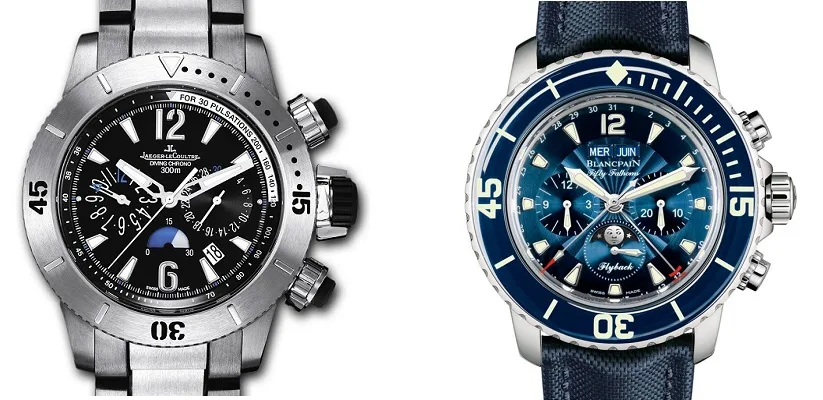It’s no secret that I prefer a watch on a bracelet to a leather strap. To me, the bracelet is more practical and the leather strap might make me look like I’m trying to punch above my weight. The Blancpain combats this with a coloured sail canvas strap with a deployment clasp. I’m glad they chose this over a bracelet as it admire colour to the watch and it’s especially useful if you’re into desk diving as the bracelet won’t get all scratched up on one side.
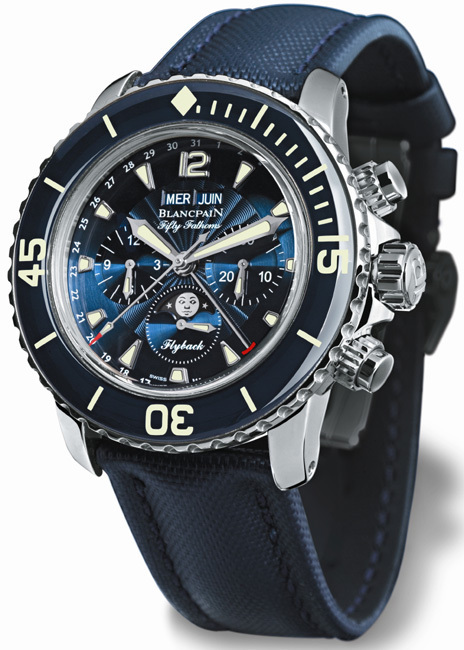
This watch is 45mm in diameter and roughly 17.5mm thick, which makes it large, but not so much that it looks unbalanced on the wrist. This watch is waterproof down to 300m which is more than adequate. As I’ve said before, if you plan on going down further then you should invest in a submarine.
What’s that hiding in the shadows I see over there? An assassin? No, it’s the JLC Master Compressor Diving Chronograph. And it’s here to put up a fight.
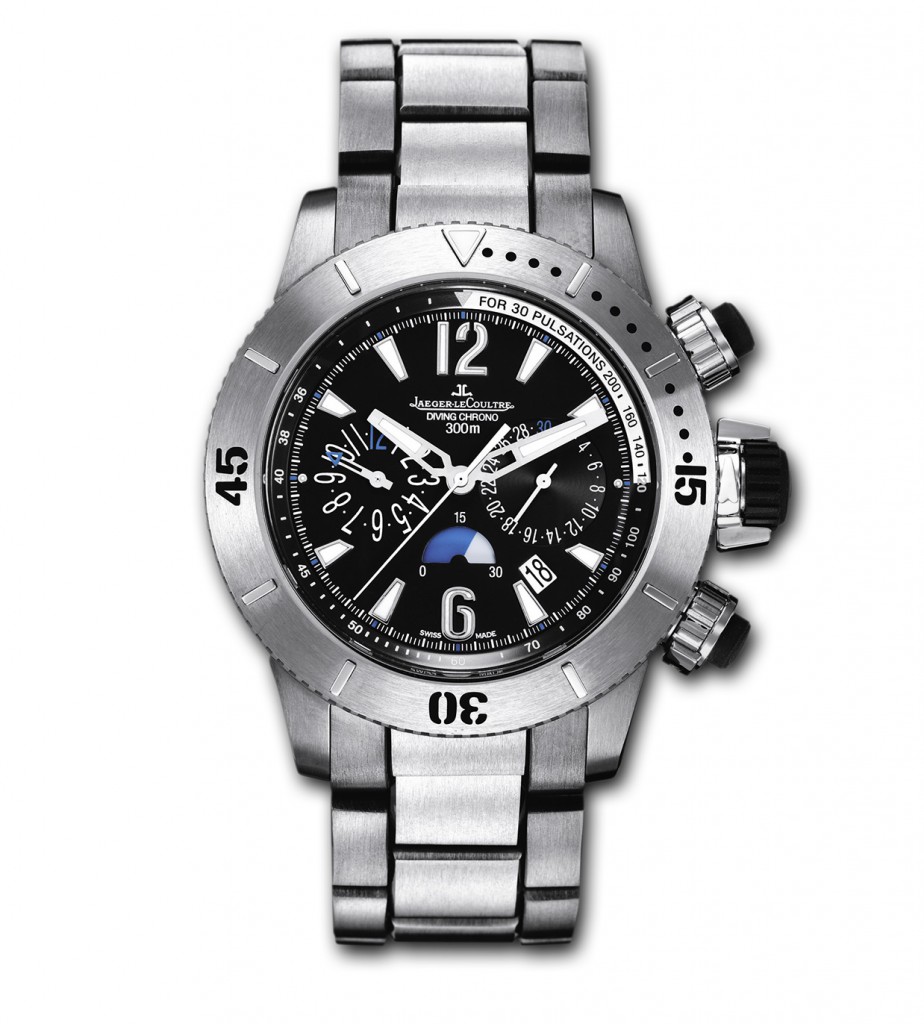
What’s it got the Blancpain hasn’t then? First it’s made of grade 5 titanium instead of stainless steel, which makes it lighter and more durable. That desk diving scratch issue won’t be a problem here either. Then there’s the in-house made Jaeger-LeCoultre chronograph movement itself, it’s calibre 751D movement that’s also automatic with 272 parts, which makes the movement itself more durable as there’s less to go wrong.
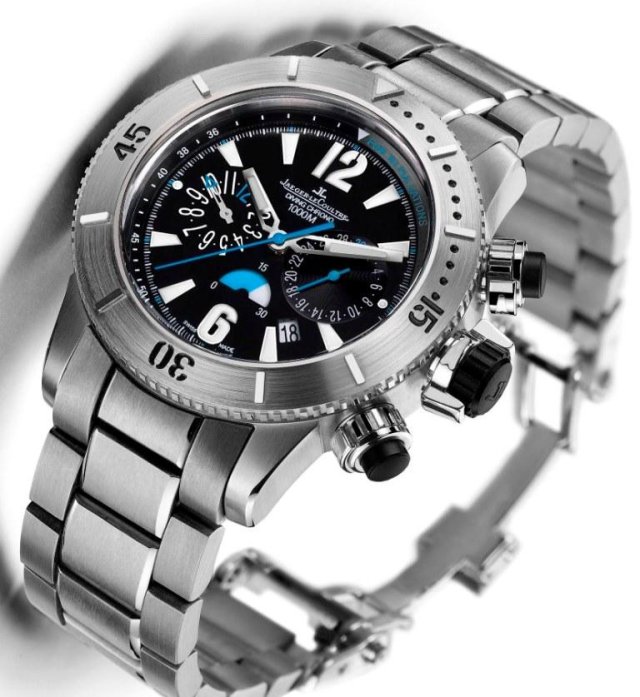
The Jaeger-LeCoultre has a 65-hour power reserve without the chronograph running and is equipped with a pulsimeter as well. Remember my article on the Blancpain Villeret that had the heart beat monitor in it? If not, click here to read it, but it’s essentially the same system and has a lot of use when diving. The pushers for the chronograph and the crown are both covered in rubber which helps to make them easier to operate in any climate and also adds to the industrial feel the watch is going for.
To aid this industrial feel even more than the bezel and push-pieces do, the hands on the watch are Trapèze shaped which makes them very squared off, they do work well with the hour indicators. The dial itself is a deep rich black which compliments the watch nicely (however I prefer the blue on the Blancpain myself).
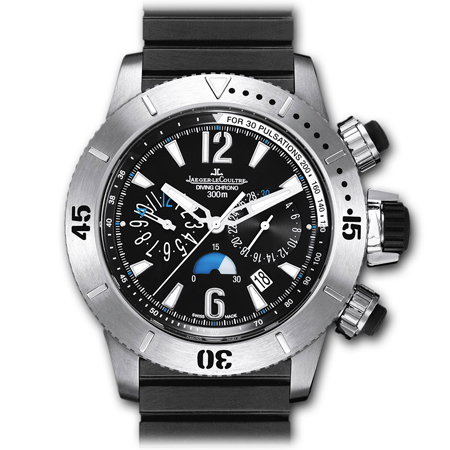
This watch has a 60 second counter, a 30 minute counter and an hour counter, meaning you can leave the chronograph running for 12 hours compared to the Blancpain’s 30 minutes. This watch is also certified to 300m in depth and is 44mm in diameter, making the difference barely noticeable.
Not it’s down to the ultimate decider, the dreaded affordability sector. I recommend playing some epic music for this part as it’s where the battle is won or lost. Let’s do it in reverse, this time, starting with the Jaeger-LeCoultre.
It’s got a date indicator, a 12-hour chronograph and costs around $15,800US(depends on which version) brand new. In terms of value that’s actually not too bad, you get a watch from a very strong brand with a good chronograph and in-house movement. The Blancpain retails for $24,700US which is around $9,000 more expensive. The difference is the Blancpain has a flyback chronograph, calendar, moonphase and is made by what some consider to be a more prestigious brand. This is a really really tough one, are the extras on the Blancpain worth it? I’m probably going to upset some readers, but I think they are. For more info, please visit blancpain.com & jaeger-lecoultre.com
Stay tuned as there’s a load more watches still floating around out there just waiting to compete.
Pages: 1 2

Harlan Chapman-Green – Contributing Editor
First introduced to horology with the Patek Philippe Calibre 89 by his father two years ago, Harlan enjoys his passion for fine horology. He prefers to spend his time in the boutiques of upmarket brands, trying out new pieces constantly. His preferred 3 brands are A. Lange & Söhne, Breguet and Vacheron Constantin. Although not much for the smaller brands, he still finds the complications intriguing and wishes to own one watch from each of his three favourites. Read his articles here.

